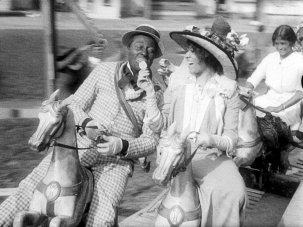“It was a girl – a girl arrived.” In Zadie Smith’s brilliant new novel Swing Time, two North London schoolgirls in the early 1980s form an intense friendship that thrives on their love of dance, and one exceptional performer in particular. Together they attend classes in a local church hall, and watch VHS copies of film musicals – rewinding and replaying the dance numbers to pay tribute to their idols and to learn their techniques.
The two girls, an unnamed narrator and her friend Tracey, are united also by their distinct racial identity – each has one white parent and one black – and it’s their matching skin tones that first draw them towards each other, and apart from their classmates. Their skin colour also separates them from the Hollywood stars they love to watch, until their eager consumption of every tapdancing film they can find leads them to a movie called Ali Baba Goes to Town, an Eddie Cantor musical from 1937.
That’s when the narrator first sees Jeni LeGon, a rare non-white face in 1930s Hollywood, but more importantly to the girls, a young woman of colour who could dance superbly, and who had the chance to do so on the silver screen. She shares her discovery with Tracey, who sits perched close to the TV, studying her moves, her mouth open in surprise.
“Her arms wheelbarrowed as she moved, her legs flew back and forth, she was a hoofer, not an obsessed technician,” writes Smith. “And she was funny: walking on her toes or freeze-framing for a second in an absurd comic attitude, on one leg, arms in the air, like the hood ornament of an expensive car. Dressed like the rest – grass skirt, feathers – but nothing could diminish her.”
The girls certainly don’t recognise LeGon’s name, they have to look her up in the credits, but once they have seen her perform the Swing Is Here to Stay routine in Ali Baba Goes to Town, they spot her in several other places, and different decades: with Bill Robinson, Betty Hutton, Cab Calloway…
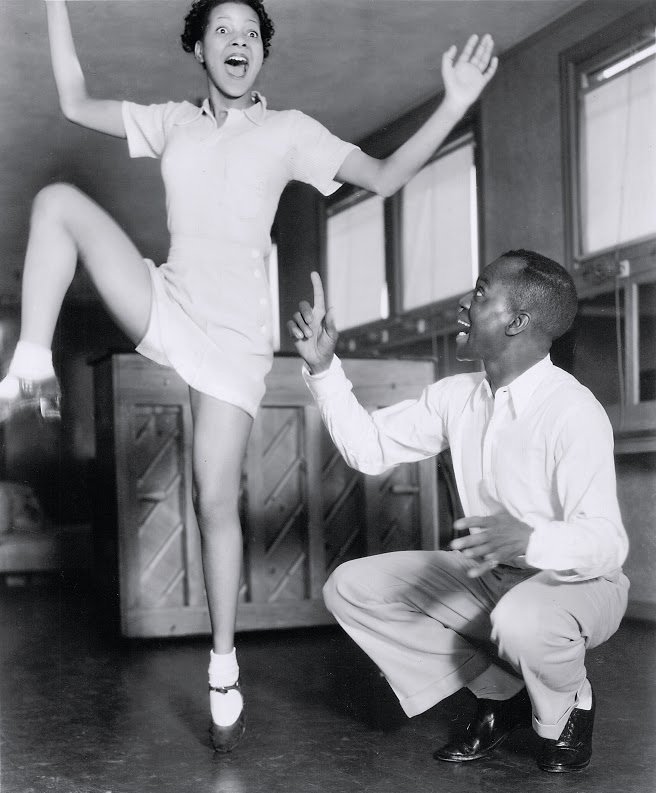
Hooray for Love (1935): Jeni LeGon and Bill 'Bojangles' Robinson
Credit: Photofest NYC
Tracey becomes obsessed with LeGon. The better dancer of the pair, she copies a LeGon routine move for move when she auditions for stage school, and later she’ll adopt the surname – not for her professional career, but for her paranoid internet identity. LeGon’s beauty and talent inspires the girls, but had they been familiar with her story when they first saw her they would know that her career was a cautionary tale for women of colour in the entertainment industry, running counter to the Hollywood myth that good looks and fast legs are tickets to stardom. Only later will Swing Time’s narrator see that on film LeGon “was not really a person at all, that was only a shadow”.
Jennie Ligon was born to a musical family in Georgia in 1916, and raised on the South Side of Chicago. She began to tapdance professionally as a teenager and at 16 joined the chorus line behind the Count Basie Orchestra. Too skinny for the skimpy costumes required, she danced in shorts, and honed a style of performance that mixed expert footwork with gangly acrobatic comedy. According to LeGon, she “danced like a boy – I did flips and knee drops and toe stands”. She and her sister subsequently took their double act on the road, and when they performed in Los Angeles she caught the attention of Earl Dancer, a film producer and talent scout. When Louella Parsons mangled her name in her Hollywood gossip column, the spelling Jeni LeGon stuck. After all, a misspelt name is a small price to pay on the path to fame, or so LeGon might have reckoned.
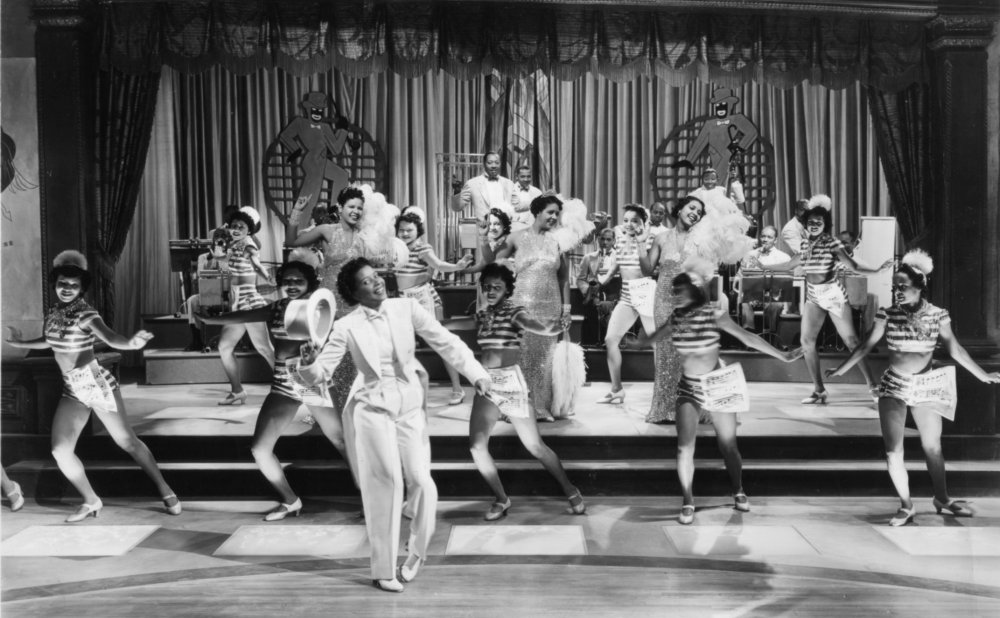
Jeni LeGon in Fools for Scandal (1938)
LeGon’s film debut, in Hooray for Love (1935), was spectacular. Girlishly sweet and professionally slick, though dressed down in polo-neck and slacks, she performs the gleeful number Living in a Great Big Way with Fats Waller and Bill ‘Bojangles’ Robinson. Waller was a great support to her in her career, helping her to create her distinctive style, and she would be the only African American woman to dance with Robinson, whose most famous duet partner was Shirley Temple.
After that triumph, MGM gave her a contract, making LeGon the first woman of colour to sign for a major Hollywood studio. She was a pioneer, but also a pariah on the lot. MGM paid LeGon handsomely, but still forbade her from eating with the other actors. “Here, they were paying me $1,250 a week and telling me I wasn’t good enough to eat in their dining room,” she later recalled. “But Hollywood was no different to the rest of the country in that respect.”
More importantly, MGM didn’t have a role to offer LeGon. She was to perform in Broadway Melody of 1936 (1935), but when it appeared she might outshine the other tapdancing woman in the film, Eleanor Powell, she was quickly dropped. Eventually MGM bought out the contract, completely unable to find a project suitable for its new signing. As LeGon later said in a TV interview, at this time MGM was parading Judy Garland and Mickey Rooney as singing-dancing American youths and “I didn’t fit in at that time as one of the kids next door.”
The cachet of LeGon’s worthless contract at least led to her getting some stage work, and she travelled to Britain to work in the West End, where she found a small but significant degree more respect than in Hollywood. She appeared in C.B. Cochran’s revue Follow the Sun and presented an uncharacteristically slow shimmy in a cabaret scene in the British film Dishonour Bright (1936).
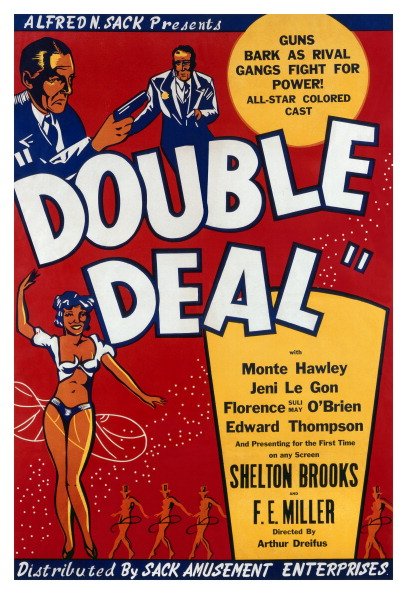
Double Deal (1939)
On her return to America, LeGon starred in independent black-led feature films such as Double Deal (1939) and turned in a number of memorable specialty dance appearances in Hollywood fare. While most of LeGon’s films are out of circulation, many of her solo routines are captured on YouTube. You can watch her in white tie and tails, performing The Boy from Harlem on a Paris nightclub set, an undreamt-of collision between Josephine Baker and Marlene Dietrich, in Fools for Scandal (1938); the cheerful Getting It Right with You from Double Deal; her debut in Hooray for Love; or the grass-skirt number that mesmerised Smith’s schoolgirls in Swing Time. In some ways it’s easier to understand the breadth of her work now, as back in the 1930s and 40s she was often uncredited – just one more dancing girl, and as the years wore on, just another maid.
In the 1940s, LeGon played the maid more and more: a necessarily brief and demeaning role for someone once looking at a bright Hollywood future. What really grates, though, is seeing LeGon re-enact the frustrations of her film career, hanging back in the dressing room while a white woman steps out into the spotlight.
In 1948’s Easter Parade LeGon played the cheeky, stagestruck maid to Ann Miller’s singing star Nadine. Early in the film, which is set in New York’s theatre world, around 1912, Fred Astaire’s character asserts that female singers must be “exotic”, and briefly changes the name of his new partner, played by Judy Garland, from Hannah to Juanita. Nadine, an established success, proves her ‘exoticism’ by strutting across the stage with her arms flung wide singing Irving Berlin’s 1920s number Shaking the Blues Away to a rapt audience. That’s the one that begins: “There’s an old superstition way down south…” Even with its lyrics sanitised to remove phrases such as “Do like the darkies do / Listening to a preacher way down south”, it remains true that if a song such as this has to be sung at all, it should have been sung by LeGon and not Miller.
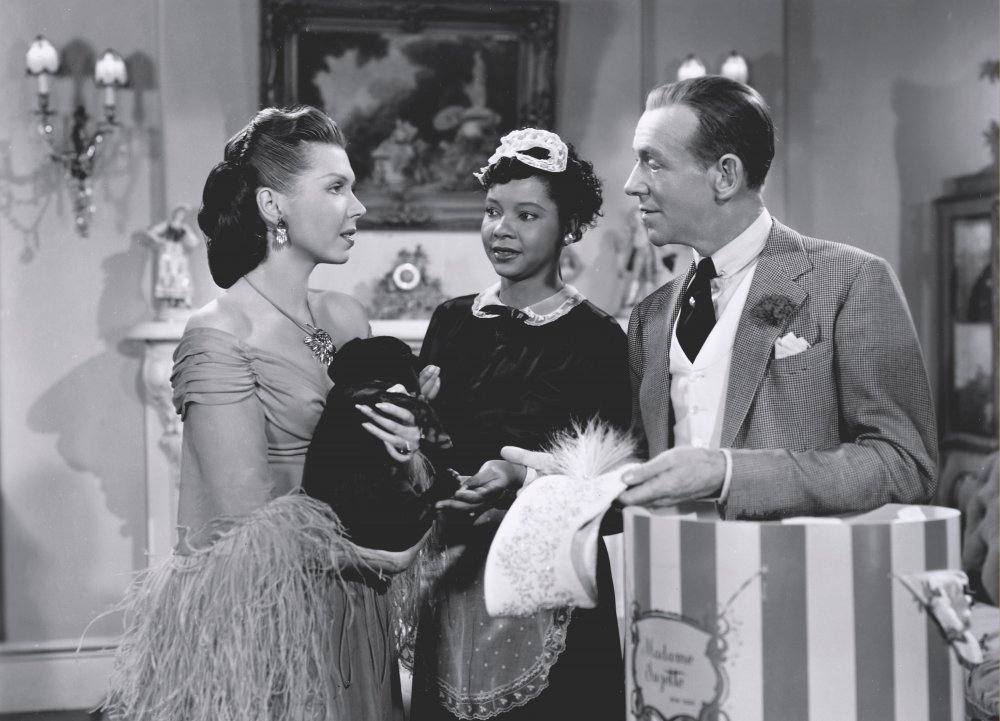
Always the maid… Jeni LeGon with Ann Miller and Fred Astaire in Easter Parade (1948)
Credit: Photofest NYC
It’s maddening to see Betty Hutton’s look of jealous incredulity as LeGon, in a black frock and lace pinny, hands her her costume in Somebody Loves Me (1952) crooning, “You got every other singer beat by a loooooooooong mile.” Even more so as Hutton starts belting out Way Down Yonder in New Orleans – singing about “those Creole babies, flashing eyes” in the home of jazz. “Look,” you want to scream at the screen, “Jeni LeGon is just over there. Can’t you give her a verse?”
LeGon’s career, like those of her contemporaries Lena Horne and Dorothy Dandridge, had stalled just as it was getting started – in these later films, her presence stands as a rebuke to the narrow-minded casting practices of the day, which would have been scant consolation to her then, or to the women of colour who attempted to follow her. In 1950, LeGon lobbied the president of the Screen Actors Guild to fight for better roles for non-white performers. “We tried to get him to intervene for us, but he wasn’t the least bit sympathetic,” said LeGon. “He didn’t even lie about it.” The Guild’s president at that time was Ronald Reagan.
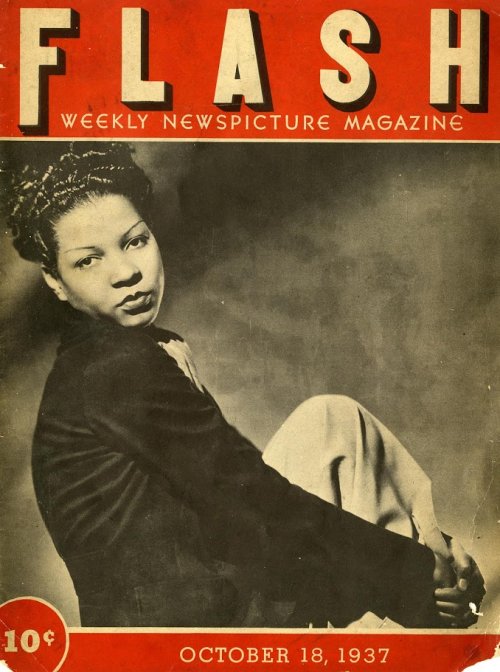
Jeni LeGon on the cover of Flash magazine
Back in 1935, before LeGon first appeared on film, her manager gave an interview to the Chicago Defender, in which he expressed the highest hopes for her future: LeGon was “a child without race,” he said. She was destined to “reign in moviedom without being typed” and “bridge the gap between the distinctly white and the distinctly black in films”. Sadly, his hopes were dashed, although LeGon did have a long and varied career outside film. After quitting Hollywood in the 50s she studied percussion and afterwards her career included dance, performing arts education and music. In 1969, she moved to Vancouver, Canada, a place she found more welcoming than her native America.
LeGon was 96 when she died in 2012, leaving behind an impressive body of stage and screen work, but so much untapped potential, and far fewer credits than she had earned. As she continued to be in the public eye from time to time – making brief appearances on stage or in films, setting up drama workshops, and in 1987 receiving an Oscar Micheaux Award from the Black Filmmakers Hall of Fame – she would comment frankly on Hollywood’s painfully slow progress in finding roles for people of colour. No doubt, were she still around she could make the same point. And any serious examination of her career would illustrate her argument beautifully.
For Swing Time’s narrator, researching LeGon’s career leads to a traumatic discovery. She had held the same dream as LeGon’s manager, who expected her to break down barriers; she wanted to believe in “a whole narrative of friendship and respect between LeGon and the people she worked with”. Far from finding professional respect in Hollywood, LeGon was forever banished from the studio dining room, so to speak, even on Easter Parade: “Astaire never spoke to LeGon on set, in his mind she not only played the maid, she was in actuality little different from the help, and it was the same with most of the directors, they didn’t really see her and rarely hired her.” In Smith’s novel, this injury to LeGon is presented as a trauma not just to the actress herself, but in its full weight, as a blow to the young women of colour who follow her in dreaming of a career on screen.
-
The Digital Edition and Archive quick link
Log in here to your digital edition and archive subscription, take a look at the packages on offer and buy a subscription.





